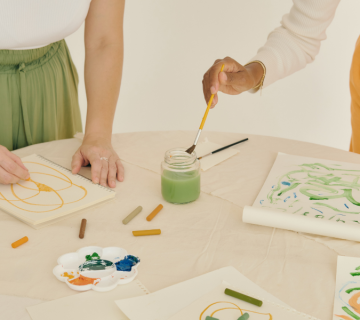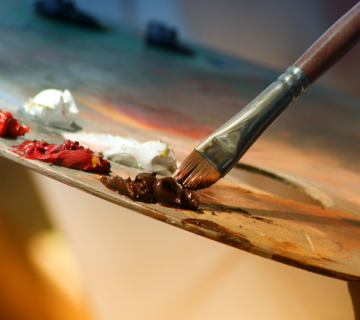How to Cover Numbers in Paint by Numbers
Paint by Numbers is a popular art form that allows people of all skill levels to create beautiful paintings. One challenge that artists often face while working on these projects is covering the numbers printed on the canvas. After painting, don’t worry if you’re having trouble seeing the numbers! We’ve got some simple techniques to help you cover them completely and achieve a smooth, professional finish.
- Use Multiple Layers of Paint
The easiest way to cover the numbers is by applying multiple layers of paint. Often, a single coat isn’t enough to hide the printed numbers, especially if the paint is too thin or light in color. Here’s how to do it:
- Step 1: Apply the first coat evenly over the numbered area.
- Step 2: Allow the paint to dry thoroughly.
- Step 3: Add a second or third coat as needed to fully cover the numbers.
In order to prevent smearing, wait until each coat is completely dried before applying the subsequent one.
- Opt for Thicker Paint
Sometimes, the paint provided in paint-by-numbers kits can be a bit too thin to cover the numbers completely. If this happens, you can thicken the paint slightly by leaving the cap off the bottle for a short time, allowing some of the moisture to evaporate. Alternatively, use a small amount of white acrylic paint to mix with your color to increase opacity. Be careful not to alter the color too much!
- Use White Paint as a Base Coat
For lighter colors like yellow, cream, or pastels, the printed numbers may be more noticeable. In this case, a base coat of white paint can be very effective in covering them.
- Step 1: Paint the number in white across the surface.
- Step 2: Once dry, paint over it with the color assigned to that section.
This extra layer helps to neutralize the number and provides a blank canvas for the final color.
- Utilize a Fine Brush for Precision
When working with small sections or numbers, using a fine-tip brush allows for more precise application. This ensures that the paint goes exactly where it needs to, covering the numbers without affecting the surrounding areas.
- Use a small, high-quality brush for better control.
- To avoid smearing or uneven coverage, do not overfill the brush with paint.
- Avoid Over-Thinning the Paint
While it may be tempting to dilute your paint for smoother application, doing so can make it too transparent. Stick to the paint’s original consistency or only thin it slightly to ensure that it effectively covers the numbers.
- Darken Light Numbers First
For light-colored sections where the number is still visible even after multiple coats, you can gently dab over the number with a darker version of the same color. Once dried, apply the intended shade on top. This will help conceal the number without affecting the overall tone of the painting.
- Use Paint Pens for Small Corrections
If small numbers peek through even after multiple coats, using paint pens can be a quick solution. Paint pens offer better control for covering numbers in tiny spaces and can be found in various colors to match your palette.
Final Touches for a Flawless Finish
After your painting is complete, take a moment to step back and assess if any numbers are still visible. Sometimes, after drying, certain areas may need a final touch-up. Apply a final layer of paint to such areas, and consider finishing with a clear varnish to offer protection and highlight the colors.







